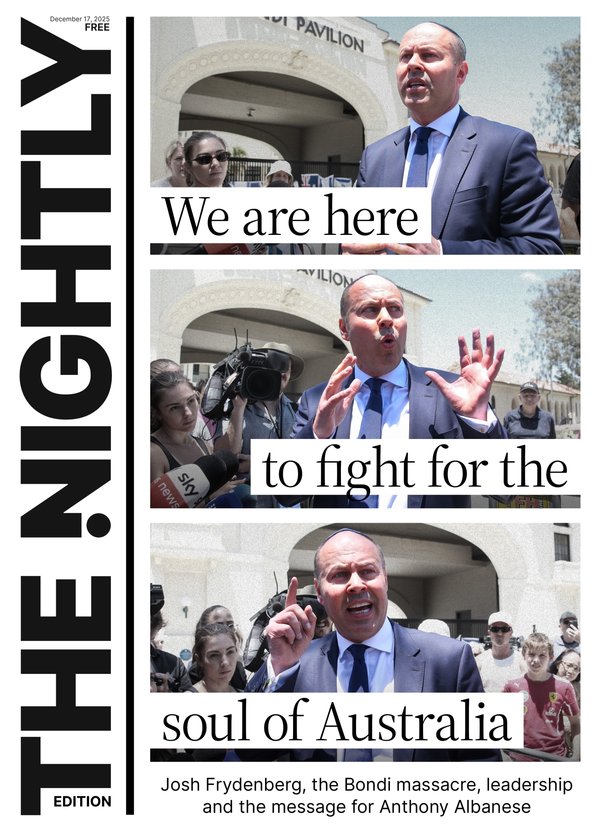Nick Bruining: The ABCs of fringe benefits tax and how to stay out of trouble with the ATO

Notwithstanding an opportunity to trick those around you with an April Fool’s Day prank, today also marks the start of a new fringe benefits tax year.
And just like you might tweak your income tax arrangements on July 1 to ensure you get a full year’s benefit, the same applies to fringe benefits arrangements.
A fringe benefit might be loosely described as the non-cash part of remuneration you receive for working for your employer.
Sign up to The Nightly's newsletters.
Get the first look at the digital newspaper, curated daily stories and breaking headlines delivered to your inbox.
By continuing you agree to our Terms and Privacy Policy.Fringe benefits can take many forms including a discounted mortgage if you work for a bank, a car that you use for private purposes or even travel, health insurance and meals.
Significantly, the cost of providing these fringe benefits is taken off your pay before income tax is calculated. That means employees benefit because they get more bang for their buck.
For example, someone taking a $1000 trip would normally pay for this with after-tax dollars. Under a salary packaging arrangement, the $1000 trip comes out before income tax is calculated.
Someone paying marginal income tax of 37 per cent, plus the 2 per cent Medicare levy, who salary packages the same trip will only see their take-home pay reduced by $610 for the same $1000 trip.
Now, your immediate thought is that every boss should be offering salary packaging. But that’s before you discover that the taxman is not going to miss out on his take.
The sting is that most employers providing these perks will be hit with a special fringe benefits tax of a whopping 47 per cent on most fringe benefits provided. That’s the same as the highest personal tax rate, plus the Medicare levy.
Because most employers adopt a total-cost-of-employment calculation for staff, offering fringe benefits with extra tax to pay will often leave many employees worse off. The FBT rate of 47 per cent is often higher than the employee’s individual tax would have been, had they just taken the cash.
And accounting for FBT can be time-consuming and expensive. Accountants love the opportunity to prepare yet another tax return, even if it is for FBT.
Independent financial planner Jacie Taylor said the many costs and complicated arrangements associated with setting up salary-packaging arrangements often masks the true cost.
“Salary packaging providers love to point out how much tax you will save — but not how much extra money you are forking out in other ways,” Ms Taylor said.
In very limited circumstances, some employers will wear the FBT impost, and for a special category of employers including charities and medical service providers, there are special FBT concessions available which can make salary-packaging arrangements worthwhile.
Others, however, can still take advantage of a very limited number of specific items that, if provided by an employer as part of an employment package, won’t be subject to FBT.
The most popular, and while not providing an immediate benefit, is salary-sacrificing pre-tax income to superannuation.
“You’ll need to ensure that the total amount you contribute remains under the annual $27,500 concessional contribution cap limit,” Ms Taylor said.
“That $27,500 figure includes the boss’ compulsory 11 per cent payment.”
You can also make use of the “otherwise deductible rule” to receive FBT-free perks.
In a nutshell, you can salary package things that might have been able to be claimed as a tax deduction for yourself, if you incurred the expense. That might include things such as income protection insurance or union and other association memberships.
There are also specific items that are often exempt from FBT.
Popular smaller electronic items such as laptops, phones and tablets are usually FBT exempt but only if they are items that you would use at work. Your boss can’t simply give everyone the latest iPad every year and avoid FBT. These FBT exemptions can also extend to software, tools and protective clothing that you use for work.
Providing a ute for employees might, in some circumstances, be FBT exempt but the rules surrounding private use and proving that a ute is a requirement for work can be messy.
Similarly, salary-packaging a car through an employer that doesn’t fit into the “special” employer category becomes extremely complicated, especially when the vehicle is rarely used for work purposes.
When the accounting and record-keeping costs are added back into the total costs, many salary packaged vehicle arrangements simply don’t stack up.
Just buying the car outright and claiming any work related expenses yourself is often the easiest and most financially effective option overall.
Nick Bruining is an independent financial adviser and a member of the Certified Independent Financial Advisers Association
Originally published as Nick Bruining: The ABCs of fringe benefits tax and how to stay out of trouble with the ATO

